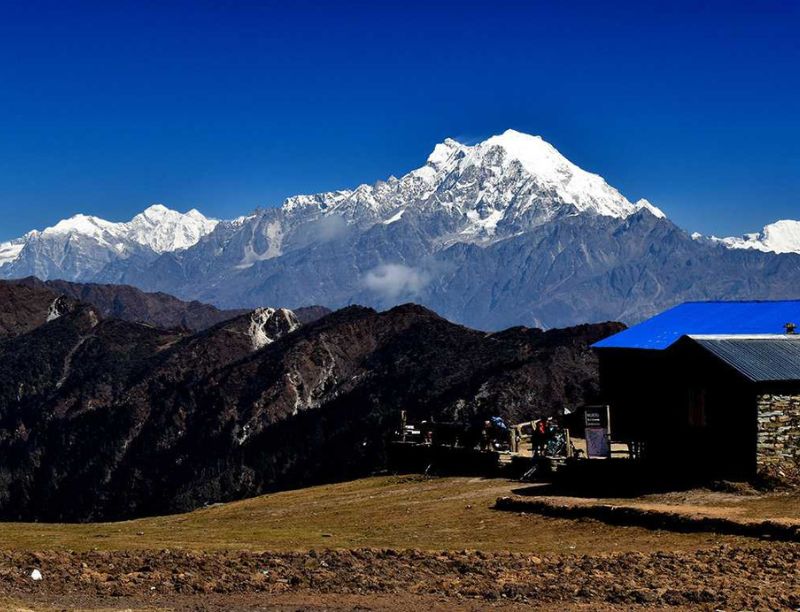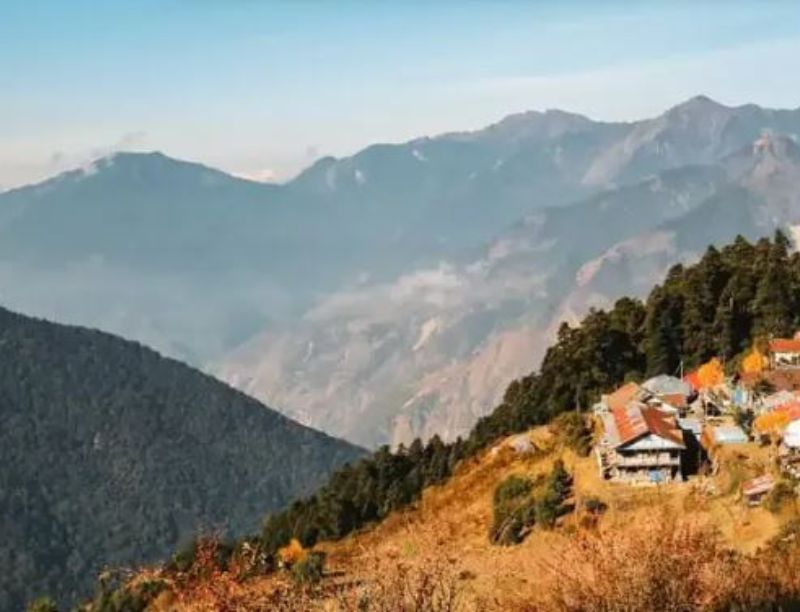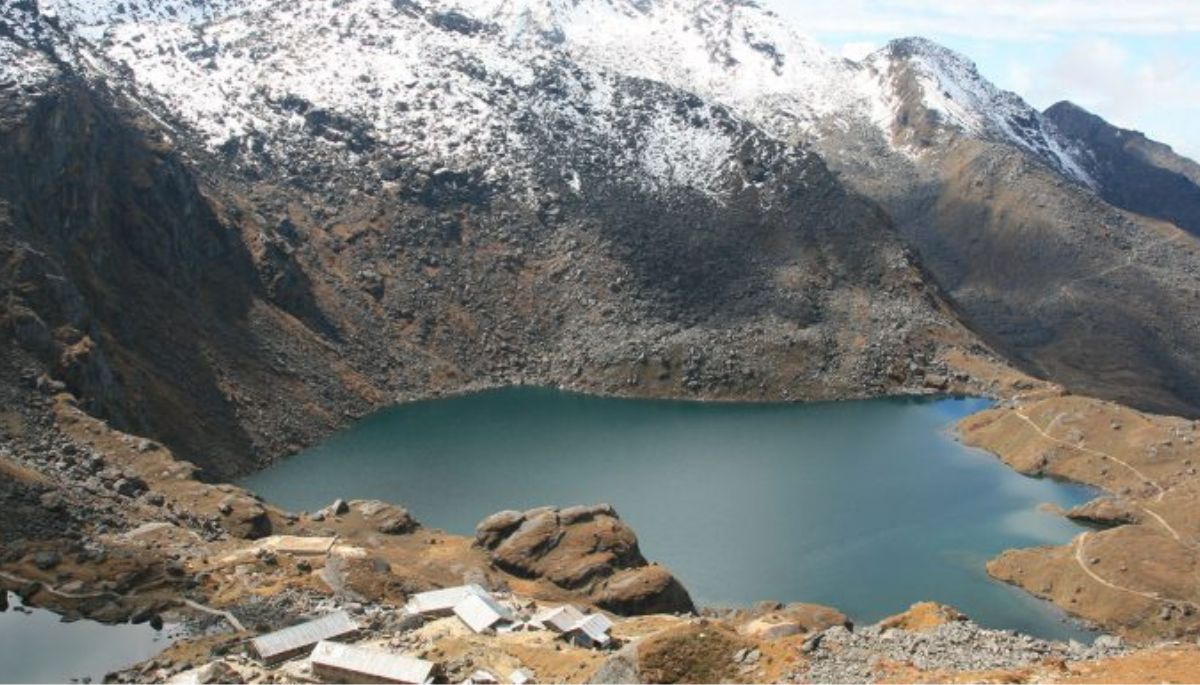Introduction
The Kathmandu to Gosaikunda trek is one of Nepal’s most popular routes, offering an awe-inspiring blend of spiritual value, scenic beauty, and cultural diversity. This trek takes adventurers from the bustling capital city of Kathmandu through charming villages and lush forests to the serene and sacred Gosaikunda Lake. Here, we explore the intricacies of this trek, providing a comprehensive guide to help you prepare for this unforgettable journey.
The Kathmandu to Gosaikunda trek, also known as the Langtang Gosaikunda trek, is a captivating adventure that showcases the diverse landscapes of the Langtang region. The trek typically starts with a scenic drive from Kathmandu to the trailhead at Syabrubesi, where the walking journey begins. The trail leads trekkers through various terrains, from lush green forests and terraced fields to rugged mountain paths and high-altitude lakes.
Trek Highlights
- Scenic Drive from Kathmandu to Syabrubesi: The journey starts with a gorgeous drive from Kathmandu to Syabrubesi, a tiny village that is the starting point. The drive offers stunning views of the Trishuli River and the surrounding hills.
- Langtang National Park: As you trek through Langtang National Park, you’ll encounter a rich diversity of flora and fauna. The park is home to red pandas, Himalayan black bears, and various species of birds.
- Traditional Tamang Villages: The trail passes through several traditional Tamang villages, where you can discover the distinct customs and warmth of the Tamang people.
- Gosaikunda Lake: The highlight of the trek is reaching the sacred Gosaikunda Lake, situated at 4,380 meters. Buddhists and Hindus revere the lake, which is thought to have been made by Lord Shiva.
- Panoramic Mountain Views: The trek offers breathtaking views of the Langtang range, including peaks like Langtang Lirung, Ganesh Himal, and Manaslu.

Preparing for the Trek
The best time to embark on the Kathmandu to Gosaikunda trek is during the pre-monsoon (spring) and post-monsoon (autumn) seasons. March to May and September to November offer clear skies, moderate temperatures, and stunning views of the mountains. These seasons also coincide with various festivals, allowing trekkers to witness local cultural celebrations.
Also Read: Champadevi to Chandragiri: Discover the Ultimate Hiking Experience in Nepal
Permits and Regulations
To trek in the Langtang region, you need to obtain two permits:
- Langtang National Park Permit: This permit is required to enter Langtang National Park and costs around NPR 3,000 (approximately USD 25).
- TIMS (Trekkers’ Information Management System) Card: This card helps track trekkers and costs NPR 2,000 (approximately USD 17) for individual trekkers and NPR 1,000 (approximately USD 8.5) for trekkers in a group.
Both permits can be obtained in Kathmandu at the Nepal Tourism Board office or through registered trekking agencies.
Physical Preparation
The Kathmandu to Gosaikunda trek is moderately demanding and requires high physical preparedness. Regular exercise, including cardio, strength training, and hiking, prepares your body for the trek. Additionally, acclimatization is crucial to avoid altitude sickness. Plan your trek with enough rest days to acclimatize properly.
Detailed Itinerary
Day 1: Kathmandu to Syabrubesi (1,550 meters)
Your adventure begins with a drive from Kathmandu to Syabrubesi, which takes approximately 7-8 hours. The journey offers beautiful views of the Trishuli River, terraced fields, and traditional villages. Upon arrival in Syabrubesi, you can explore the village and prepare for the trek.
Day 2: Syabrubesi to Lama Hotel (2,380 meters)
The trek starts with a descent to the Bhote Koshi River, followed by a gradual ascent through lush oak and rhododendron forests. You’ll pass by small settlements and cross suspension bridges before reaching Lama Hotel, a quaint village in the forest.
Day 3: Lama Hotel to Langtang Village (3,430 meters)
Today’s trek takes you deeper into Langtang Valley. The trail follows the Langtang River and offers stunning views of Langtang Lirung. As you ascend, you’ll pass through Ghodatabela, a small settlement with a few lodges, before reaching the traditional village of Langtang.
Day 4: Langtang Village to Kyanjin Gompa (3,870 meters)
Leaving Langtang Village, the trail gradually ascends to Kyanjin Gompa, a picturesque village surrounded by snow-capped peaks. You’ll pass through yak pastures, small streams, and mani walls (stone walls with Buddhist inscriptions) along the way. Kyanjin Gompa is home to an ancient monastery and a cheese factory.
Day 5: Acclimatization Day at Kyanjin Gompa
This day is reserved for acclimatization and exploration. You can take a side trip to Tserko Ri (4,985 meters) for panoramic views of the Langtang range or visit the nearby glacier and Langshisha Kharka. The day helps you adjust to the high altitude.
Day 6: Kyanjin Gompa to Lama Hotel
After enjoying the stunning scenery and local culture of Kyanjin Gompa, you’ll retrace your steps to the Lama Hotel. The descent is much faster and provides a different perspective of the landscape.
Day 7: Lama Hotel to Thulo Syabru (2,210 meters)
Today’s trek involves descending the river and ascending through forests to Thulo Syabru, a beautiful village perched on a ridge. The village offers excellent views of the Ganesh Himal and the surrounding valleys.
Day 8: Thulo Syabru to Sing Gompa (3,330 meters)
The trail from Thulo Syabru to Sing Gompa (also known as Chandanbari) steadily climbs through pine and rhododendron forests. Sing Gompa is famous for its cheese factory and the ancient monastery that gives the village its name.

Day 9: Sing Gompa to Gosaikunda (4,380 meters)
This is one of the most exciting trek days as you make your way to the sacred Gosaikunda Lake. The trail ascends steeply through rugged terrain, with breathtaking views of the Himalayas. Gosaikunda Lake, surrounded by mountains, is a sight to behold.
Day 10: Gosaikunda to Dhunche (1,960 meters)
The journey back involves descending from Gosaikunda to Dhunche, the administrative center of the Rasuwa district. The trail offers varied landscapes, from alpine regions to forests and terraced fields.
Day 11: Dhunche to Kathmandu
The trek concludes with a drive from Dhunche back to Kathmandu. The journey provides a final chance to reflect on the Langtang region’s incredible experiences and stunning landscapes.
Cultural and Spiritual Significance
Gosaikunda Lake is highly religiously significant to both Hindus and Buddhists. According to Hindu mythology, Lord Shiva created the lake to cool his burning throat after swallowing poison. Every year, during the full moon of August (Janai Purnima), thousands of pilgrims visit Gosaikunda to take a holy dip in its waters.
The Tamang and Sherpa communities in the region also add to the trek’s cultural richness. Their traditional stone houses, colorful prayer flags, and warm hospitality offer a glimpse into the local way of life.
Essential Tips for Trekkers
- Stay Hydrated: Altitude can cause dehydration, so drink plenty of water throughout the trek.
- Pack Shrewdly: Bring necessities like warm clothes, a good sleeping bag, trekking poles, and a first-aid kit. Pack light, but ensure you have all the necessary gear.
- Respect Local Culture: Pay attention to the area’s traditions and practices. Always get someone’s permission before snapping their picture, and dress modestly.
- Acclimatize Properly: To avoid altitude sickness, ascend slowly and take rest days as needed. Recognize symptoms such as nausea, headaches, and dizziness.
- Stay on Marked Trails: Follow the designated paths to avoid losing and protect the fragile environment.
Conclusion
The Kathmandu to Gosaikunda trek is a remarkable journey that combines natural beauty, cultural immersion, and spiritual discovery. From the bustling streets of Kathmandu to the tranquil waters of Gosaikunda, every step offers a unique experience. Whether you’re an experienced hiker or an explorer for the first time, this trek promises memories that will last a lifetime. Prepare well, respect the environment, and embrace the journey that awaits you in the heart of the Himalayas.
Read More: Complete Trekking Guide for Tsum Valley Trek


0 Comment